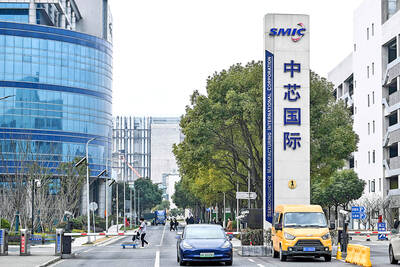Currency traders are getting no joy from one of the market’s most crowded trades.
US dollar bulls have reason to be gloomy after the greenback ended last week little changed against a basket of peers following a three-week decline. The US currency struggled to lure buyers after a mixed jobs report and a US Federal Reserve meeting in which officials signaled no change to their interest-rate policy outlook.
With centrist French presidential candidate Emmanuel Macron leading in the polls heading into the final round of the election yesterday, market participants have become more optimistic about the euro’s prospects. In the options market, the likelihood of the US dollar rising against the euro this year has tumbled from a month ago.
“The [US} dollar is at a tipping point,” said AG Bisset Associates chief executive officer Ulf Lindahl, who manages about US$1 billion from Norwalk, Connecticut.
The greenback “is likely poised to drop sharply in the months ahead” as US economic data soften, he said.
Inflation and retail sales will be among the indicators to watch this week, as well as speakers including New York Fed President William Dudley.
This month’s consumer-price report might show inflation cooled from the same period last year, echoing last week’s reading on average hourly earnings.
The US dollar fell 0.9 percent last week to US$1.0998 per euro and is down more than 4 percent this year. The likelihood of the greenback posting an annual gain this year has dropped to 17 percent from 32 percent a month ago, options imply.
While the Fed has signaled two more rate hikes this year, traders aren’t convinced the economy is strong enough.
“The [US] dollar has peaked,” Societe Generale global strategist Kit Juckes wrote in a note last week.
While the Fed is on track for a rate increase this month, “that won’t be enough to drive the dollar very far unless the market rethinks the longer-term rate outlook,” he said.
San Francisco Fed President John Williams said his outlook for three or four rate increases this year has not shifted, as the US labor market shows signs of expanding beyond its sustainable rate and the economy is operating above potential.
“I haven’t changed, again, my views on what appropriate policy is” for the remainder of the year, Williams told reporters on Friday after a speech in New York, referring to his comments last month that three or four hikes would be required.
On Saturday, at an event in California, Williams said the economy “is operating above potential.”
Williams, who took over from now-Fed Chair Janet Yellen at the San Francisco Fed in 2011 when she joined the Fed’s Board of Governors, next votes on monetary policy next year.

SEMICONDUCTOR SERVICES: A company executive said that Taiwanese firms must think about how to participate in global supply chains and lift their competitiveness Taiwan Semiconductor Manufacturing Co (TSMC, 台積電) yesterday said it expects to launch its first multifunctional service center in Pingtung County in the middle of 2027, in a bid to foster a resilient high-tech facility construction ecosystem. TSMC broached the idea of creating a center two or three years ago when it started building new manufacturing capacity in the US and Japan, the company said. The center, dubbed an “ecosystem park,” would assist local manufacturing facility construction partners to upgrade their capabilities and secure more deals from other global chipmakers such as Intel Corp, Micron Technology Inc and Infineon Technologies AG, TSMC said. It

People walk past advertising for a Syensqo chip at the Semicon Taiwan exhibition in Taipei yesterday.

NO BREAKTHROUGH? More substantial ‘deliverables,’ such as tariff reductions, would likely be saved for a meeting between Trump and Xi later this year, a trade expert said China launched two probes targeting the US semiconductor sector on Saturday ahead of talks between the two nations in Spain this week on trade, national security and the ownership of social media platform TikTok. China’s Ministry of Commerce announced an anti-dumping investigation into certain analog integrated circuits (ICs) imported from the US. The investigation is to target some commodity interface ICs and gate driver ICs, which are commonly made by US companies such as Texas Instruments Inc and ON Semiconductor Corp. The ministry also announced an anti-discrimination probe into US measures against China’s chip sector. US measures such as export curbs and tariffs

The US on Friday penalized two Chinese firms that acquired US chipmaking equipment for China’s top chipmaker, Semiconductor Manufacturing International Corp (SMIC, 中芯國際), including them among 32 entities that were added to the US Department of Commerce’s restricted trade list, a US government posting showed. Twenty-three of the 32 are in China. GMC Semiconductor Technology (Wuxi) Co (吉姆西半導體科技) and Jicun Semiconductor Technology (Shanghai) Co (吉存半導體科技) were placed on the list, formally known as the Entity List, for acquiring equipment for SMIC Northern Integrated Circuit Manufacturing (Beijing) Corp (中芯北方積體電路) and Semiconductor Manufacturing International (Beijing) Corp (中芯北京), the US Federal Register posting said. The